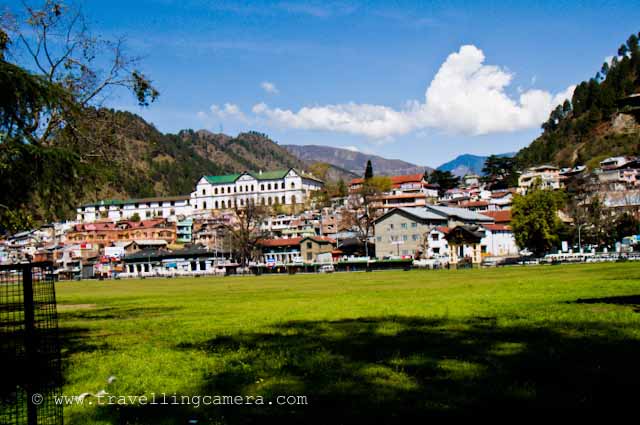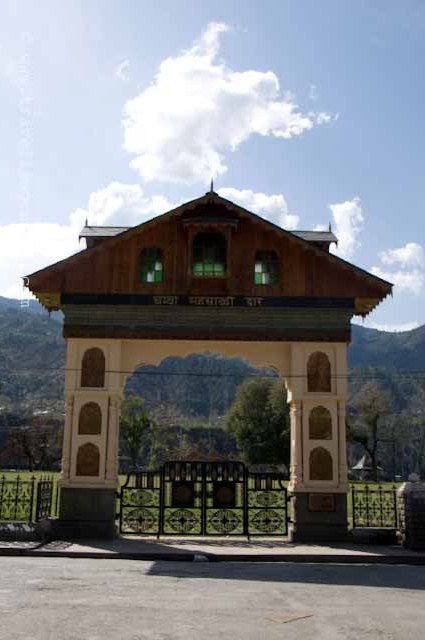Chamba Region of Himachal Pradesh, INDIA - A Place full of adventure around Bharmour, Naturally rich places like Dalhousie/Khajjiar and Amazing Wildlife Opportunities
Chamba is one of the twelve Districts of Himachal Pradesh which is exceptionally rich in terms of Nature, Wildlife, Heritage, Culture & Art etc. But many regions of Chamba are least explored due to various reasons. Let's have a quick PHOTO JOURNEY to Chamba and know about the opportunities for Nature & Adventure Lovers...
Above Photograph shows Chamba Town. It's Chaugan, which is Hindi word to define a place where cattle graze. Initially it used to be grazing ground and now it's gated with proper boundary around the place. This huge lush green ground is now used for State level festivals like Minjar. Minjar is the most popular fair of Chamba which is attended by a large number of people from every nook and corner of the district. This Fair is held on the second Sunday of the Shravana month. The fair is announced by distribution of Minjar which is a silk tassel worn on some parts of the dress by men and women alike. This tassel symbolizes the shoots of paddy and maize which make their appearance around this time of the year. The week long International fair begins when the Minjar flag is hosted in historical Chowgan. The town of Chamba wears a colorful look with every person turning out in best attire.
Main Tourist places to visit in Chamba are Dalhousie, Khajjiar and Bharmour regions. These are some of the known places where people could reach and there are plenty of others which need more efforts for exploring the extreme beauty of Himalayas. Apart from natural beauty, there are lot of other opportunities for Wildlife enthusiasts and Adventure Lovers. Snow Leopard is found in Upper Bharmour regions are in some of the wildlife conservation regions of Chamba.
Apart from Natural Beauty and Wildlife, Adventure lovers can enjoy some of the challenging treks of Himachal in Chamba region. Most of these treks are not very popular among casual trekkers, but professionals always look forward to explore these in life. Chamba, being a far away place, is not much explored as compared to other hill stations of Himachal Pradesh. There is one of the popular trek which has some spiritual angle attached to it - Manimahesh Trek in Chamba, Himachal Pradesh, INDIA.
There have been a total of 67 rajas who have ruled Chamba district since the Principality of Bharmour was established in the 6th century, beginning with Raja Maru. Indeed it is believed to have been an isolated case in the history of India that the Chamba kingdom remained independent without interference for over 1000 years. Before Raja Sahila Varman, the territorial extent of the state of Chamba was ill-defined and was more a loosely based territory marked by disunity. Chamba state was run by Ranas, petty rulers who were allocated locally governed areas known as 'fiefdoms' and treated them as their own virtually independent kingdoms. The rajas of the Chamba Kingdom, ruling from the capital in Chamba divided the kingdom into 5 mandalas, later termed wazarats. These sub-territories consisted of Chamba, Bharmour, Bhatti, Churah and Pangi
Above is photograph of Bhuri Singh Museum which is very near to Choughan of Chamba and in middle of the town. The Bhuri Singh Museum at Chamba was established in 1908 in honour of the raja at the time, Raja Bhuri Singh, who ruled Chamba from 1904 to 1919. J. Ph. Vogel, an eminent indologist, and expert on the history of Chamba state, proposed the museum to preserve a number of valuable inscriptions, mostly in Sarda script, which contained some rare information about the medieval history of Chamba. the parasites of Sarahan, Devi-ri-kothi and mul Kihar are still preserved in the museum. Bhuri Singh donated his family collection of paintings to the museum, including royal portraits which ranged from Basohli to Guler-Kangra in style, and embroidered Pahari miniatures. Numerous artifacts, important to the heritage of Chamba were added, including coins, hill jewelry and royal & tradiitional costumes, arms and Armour, musical instruments and other items. The current museum was built in 1975 in concrete.
Hope to visit Chamba again to explore wildlife of this region of Himachal Pradesh, India.









.jpg)
Comments